Centennial Arena first step on path to Southeast Event Centre
Advertisement
While smaller communities throughout the Southeast were following the lead of La Broquerie in building their own indoor ice rinks, Steinbach spent years mulling over its options, while the community’s hockey players travelled to La Broquerie to use the arena there.
Even a proposal to build an outdoor rink, in the 1950s, created a great deal of controversy in the Steinbach community where sports and recreation were not encouraged and public support for recreation facilities was seen as a frivolous expenditure of tax dollars.
The community’s curling rink went up through the efforts of a group of dedicated curlers in the late 1940’s, but it would be another 20 years before Steinbach’s first arena became a reality.
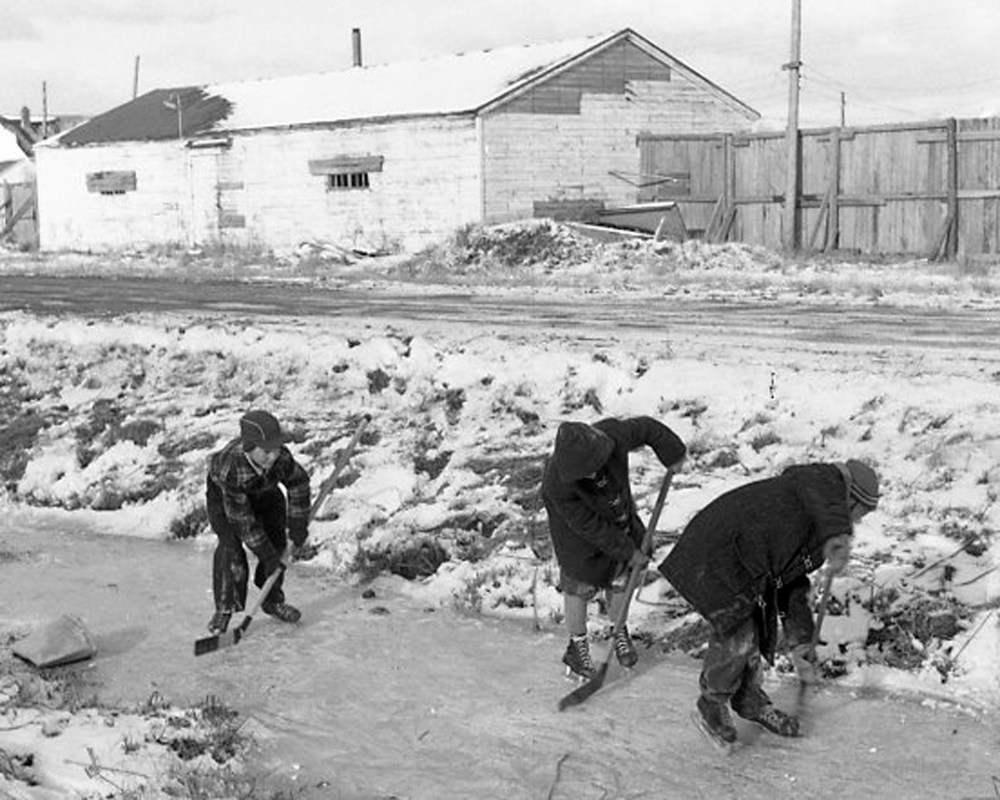
Nearly two decades after the beginning of discussions about an indoor skating arena for Steinbach, the dream of the recreation committee would soon become a reality with the awarding of the contract for construction of a $95,000 arena in 1966.
The winning bidder for Steinbach’s new rink was A.K. Penner and Sons Ltd. of Blumenort, with a low bid of $106,655.
In order to bring the bid in line with the $95,000 approved in a July 25 referendum, it was necessary to postpone a number of items. The contractor agreed to install the bleachers, dressing rooms and dressing room plumbing for the same price at any time until the following June….if the town could see clear to pay for them at that time.
Town officials found that inflation had become a household word and it certainly applied in the case of Steinbach’s rink.
In March of 1966, when the plan for an indoor rink was first broached by the recreation committee, the cost figure bandied about was $50,000. When two plans were presented to council in April, the funds expected to be necessary for construction ranged from $74,000 to $78,000. When it came to the referendum July 25, the cost figure had risen to $95,000, and that was what was voted on and approved by a wide margin.
The project then went to tender, and when the final bids were in, the lowest was more than $10,000 higher than what the public had given council the green light on.
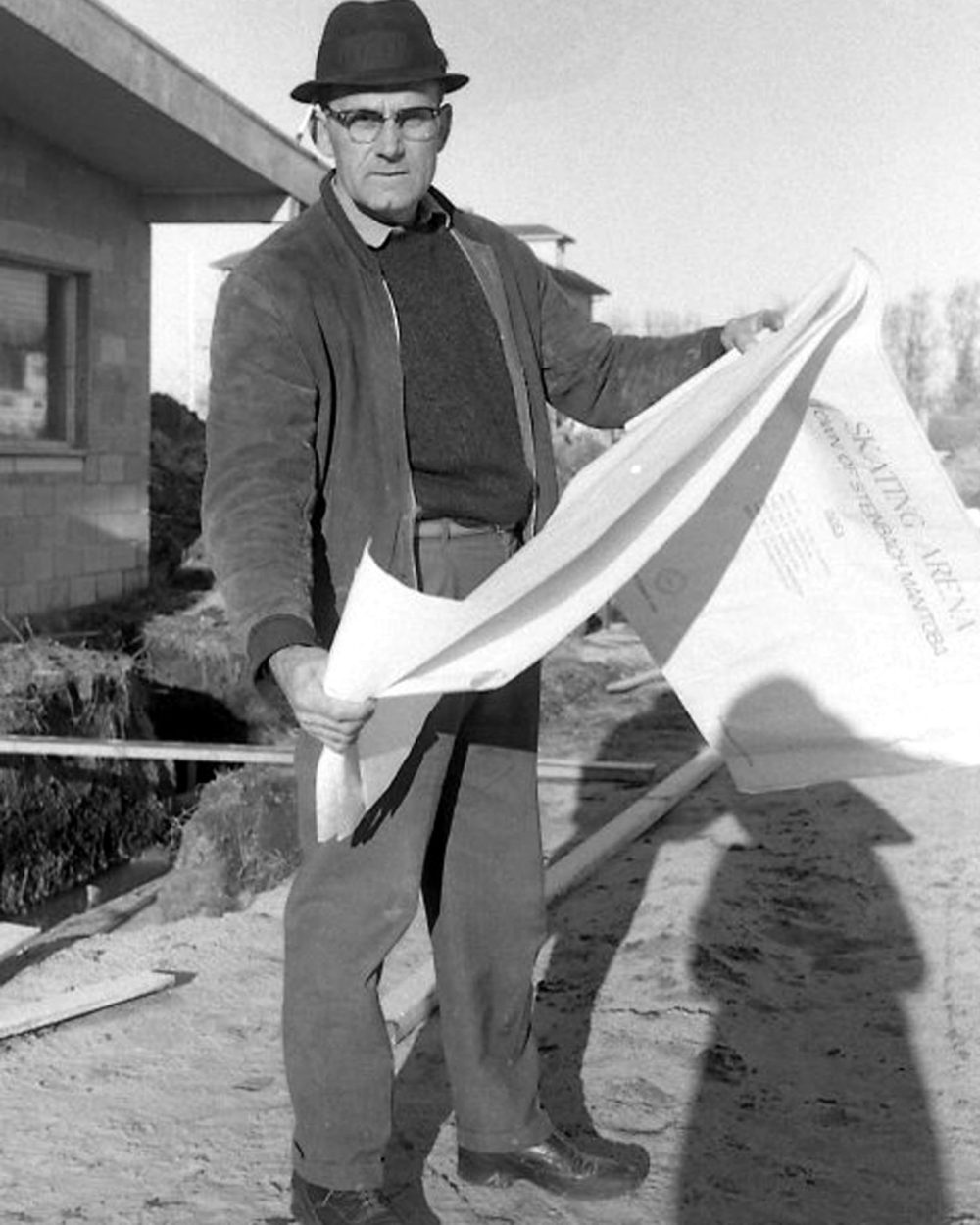
While it seemed to take forever to get it built, once the Steinbach Centennial Arena opened its doors in 1967, it did not take long for the community to discover there was more to having an arena than ice sports.
From the time Herb Martel scored a pair of goals to give the Steinbach Eagles their first win in their new home, until the construction began on installation of a concrete floor and installation of artificial ice, Steinbach had a multi-purpose facility that was well worth waiting for.
That first year, the arena hosted a variety of events like horse shows and professional wrestling matches, both of which had been standard fare at Hanover Agricultural Society fairs and Steinbach Chamber of Commerce July 1 sports days for years, and now could be moved indoors, where there was no threat of inclement weather.
Even the annual tent gospel revival meetings moved indoors in 1968, with a standing room only crowd packing the Steinbach arena for the Barry Moore Crusade.
The decision to add artificial ice was decided by referendum, but unlike earlier referendums that involved extensive debate and hand-wringing by elected officials, this time a call for home games in the playoffs was heard loud and clear.
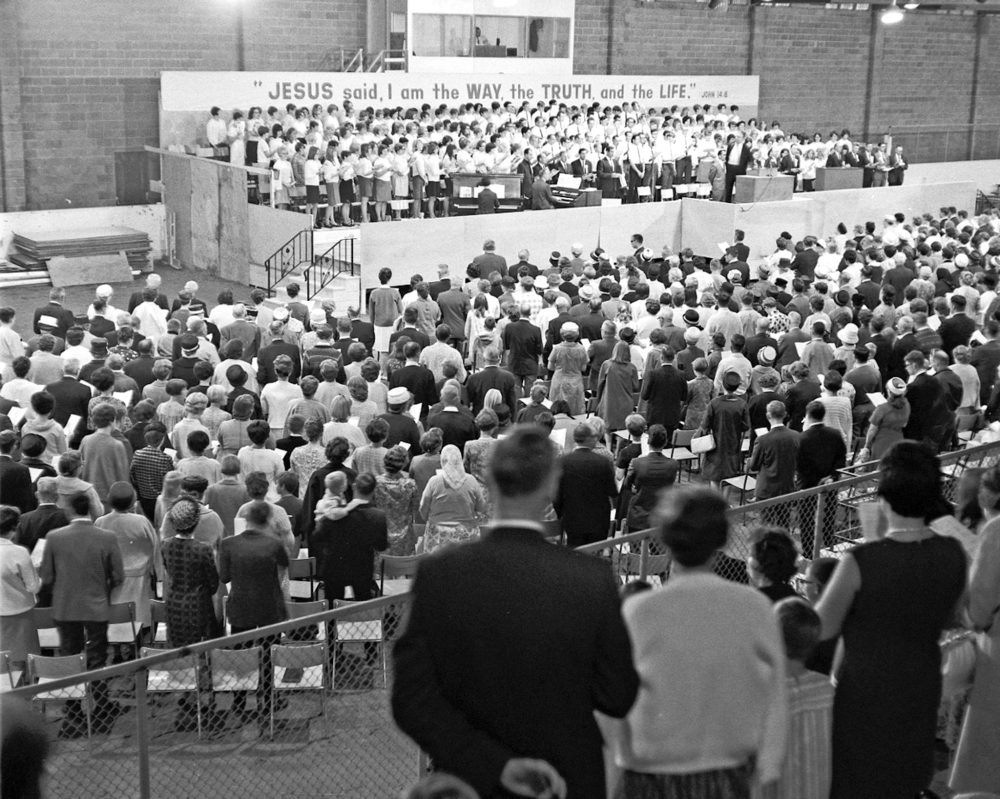
What may have been influential in that vote was the fiasco of the 1968 playoffs, when the spring thaw played havoc with the ice and Steinbach ended up forfeiting the final series to St Pierre.
While the new arena certainly provided a more comfortable space for hockey players, who were used to playing outdoors, it was soon apparent that the people paying the freight, the fans in the stands, demanded to be more comfortable too.
A 1972 proposal by Coun. Jim Penner had the Town of Steinbach quickly taking care of that little problem.
In his pitch to spend more than $4,000 for heaters to be installed over the stands, Penner assured council the money would be well spent. Heaters would provide heat for the benches and the people sitting on them, but would not heat the air. The heaters were bound to improve attendance at games, he said, because, after all, few people would sit on frigid bleachers for over two hours, when the temperature dipped to 20-below.
When told the operating cost of the heaters would be less than 50 cents per heater per night, the vote was unanimous. Speculation had it, that the vote may have been influenced by council members who were also hockey fans, and realized just how cold those bleacher seats could get.
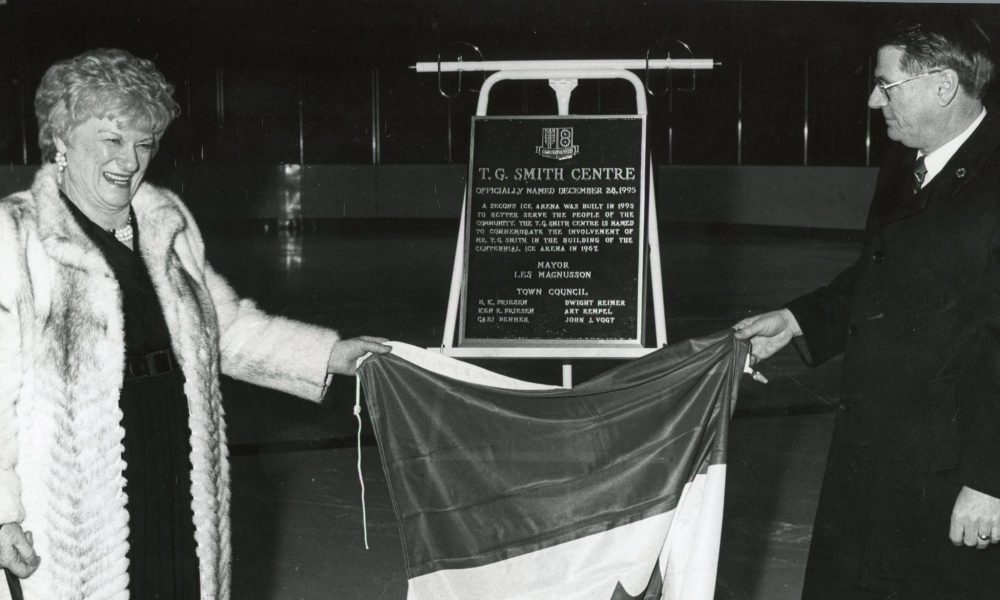
The arena was named the Centennial Arena to recognize Canada’s centennial year, even though many thought it should be called the T.G. Smith Arena, in recognition of the efforts the local banker made in having it built. His tireless crusade to have better recreation facilities for the community’s youth, started with a letter to the editor of The Carillon News in 1949 and culminated with his cutting the ribbon of the new arena in 1967.
1974 arena expansion is second centennial project
The community’s first town-funded facility was built during Canada’s centennial in 1967, and ironically, its first major upgrade came as another centennial project on the 100th anniversary of the 1874 arrival of the first Mennonite families in Steinbach. Times and community opinions about recreation had obviously changed.
The extensive addition to the front lobby on the northwest side was completed in 1974 at a cost of $170,328, supported by a $78,000 provincial grant.
The addition included a large lobby with a concession area serving early morning minor hockey parents and in-between-periods hockey fans. Larger washrooms and four new dressing rooms were also part of the 1974 arena expansion.
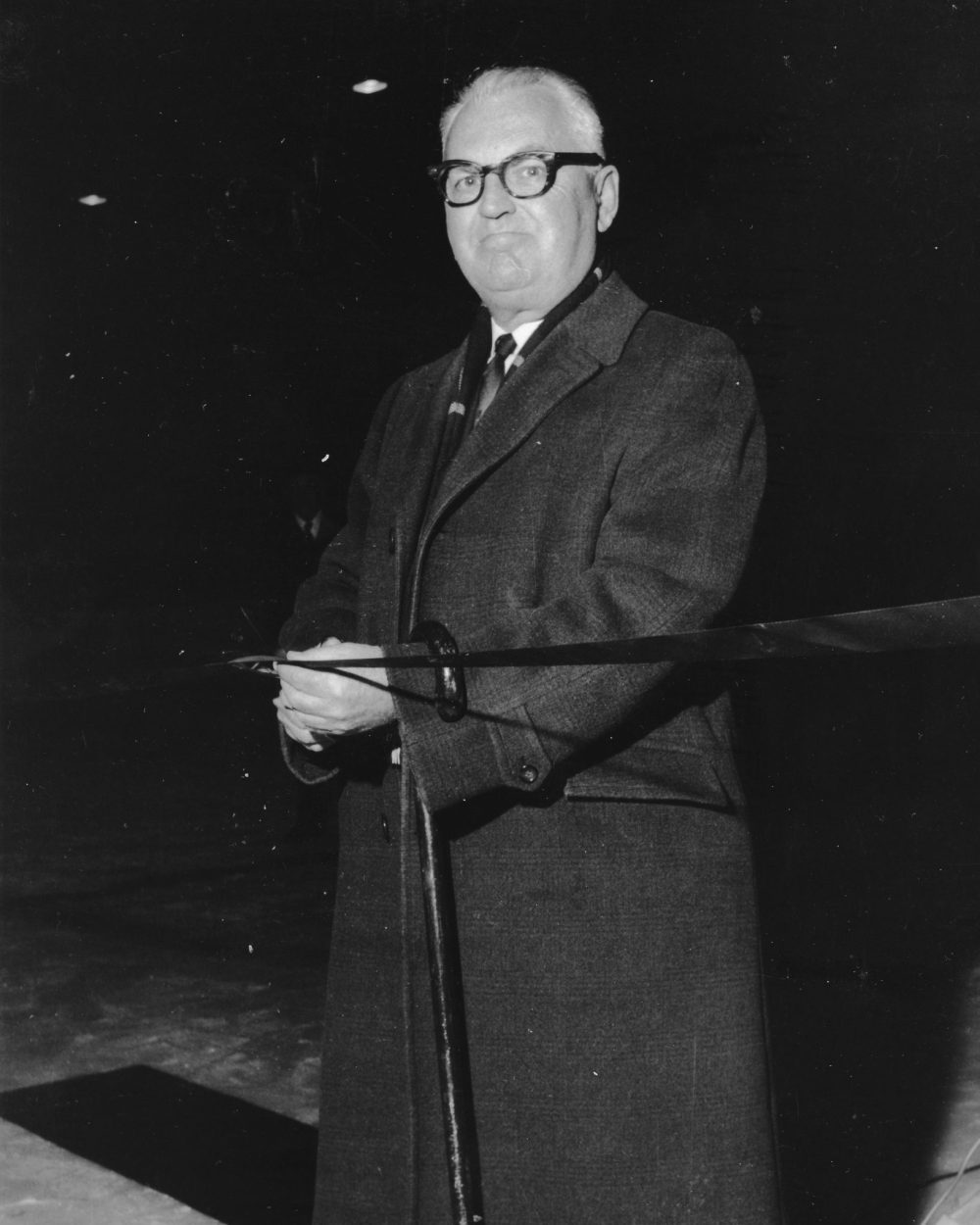
Now that the town had come to grips with the need for a recreational facility like the Centennial Arena, the Steinbach facility became very much a work in progress, with a steady stream of improvements over the ensuing years.
Russ Dyck and Jac Siemens, with more than four decades of experience of arena management between them, have seen any number of changes to the landscape of Elmdale Drive, between Reimer Avenue and Lumber.
Siemens was facility manager from 1982 until 2000, and is now a City of Steinbach councillor, first elected in 2006. Russ Dyck assumed Siemens’ responsibilities with the parks and recreation department in July of 2000. Since then, he has seen a second arena go up and the first arena go down as the Southeast Event Centre took shape.
When Siemens arrived in 1982, there were all kinds of coloured lines on the arena floor, a reminder of a failed experiment to introduce indoor tennis as a summer sport. The lines were still there nearly 30 years later, and it was thought, maybe, with improved lighting, tennis may be brought back.
During a tour of the facility in 2019, Dyck spoke of the latest improvements to the facility, which included a major lighting project to be completed during the summer.
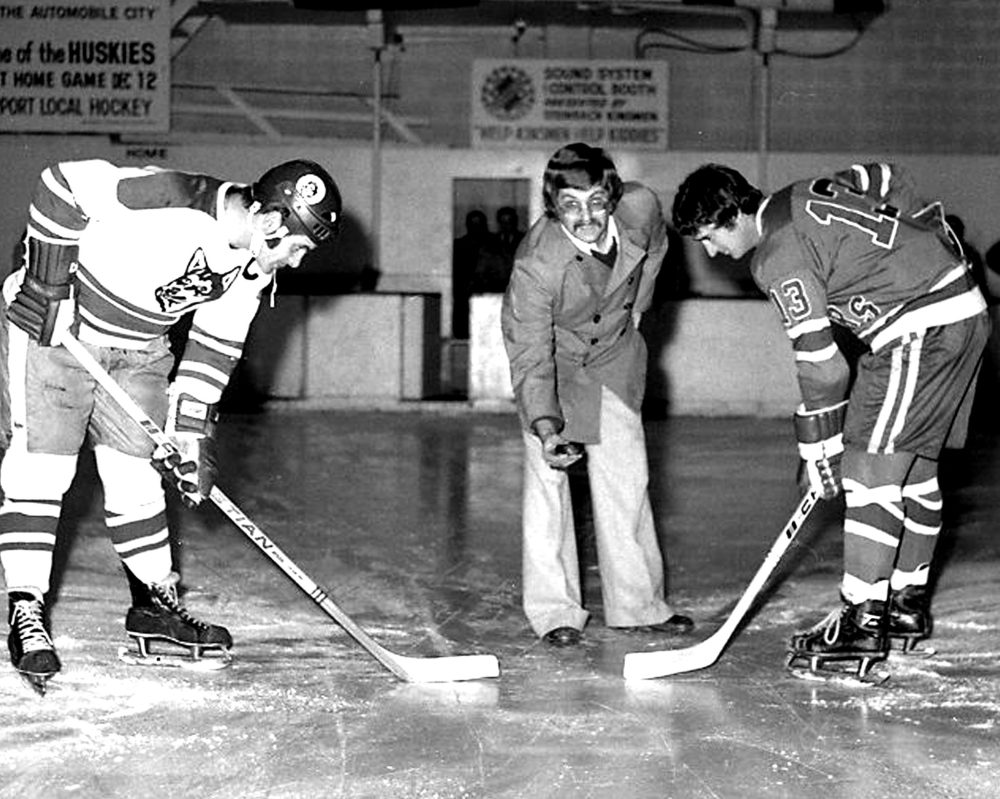
The reflective ceiling over the ice surface was replaced and 52 LED light fixtures would make things a lot brighter than the former 36 ice surface lights.
The $95,000 lighting project, involving a Manitoba Hydro rebate, was just part of continuing efforts to keep the aging facility in top shape until a new facility could be built.
Over the years, outdoor upgrades included new roofs for the whole building, including the lobby, which had been added in 1974.
Inside the arena, the dressing rooms were stripped down completely and new showers were added. The bleachers over the walkway to the dressing rooms were closed in and rows of bleachers over the exits at each end of the ice surface were added as well.
The building which provided a change room for the playground rink became part of the arena built in 1967. Since arena expansion in 1974, it became a multi-purpose facility over the years and most recently was a dressing room, offices and meeting room and lounge for the Steinbach Pistons.
In 2017, the lobby was refurbished. Even the press box got a facelift and put back in use after being dormant for a number of years.
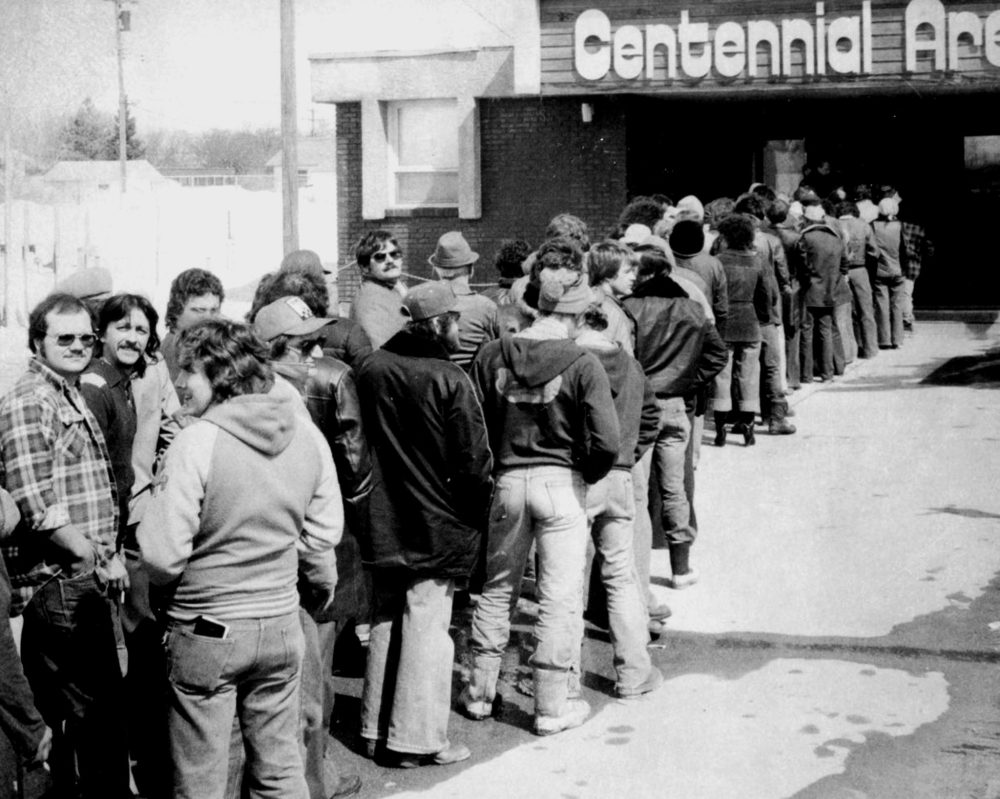
During the regular season it used to be a pretty lonely place for the single Carillon reporter there for every game, but he could expect lots of company when the playoffs and the radio station personnel arrived simultaneously.
In the 1970’s, CHSM’s play-by-play man Henry Dyck used to lock the press box door while he was on air so The Carillon photographer had to wait on the landing until it was time for another commercial. Fortunately, it being radio, the waits were not that long, as there were lots of interruptions for ‘a word from the sponsors.’
Siemens said during all the years he was at the arena he had tried to get the bleachers expanded and he marvelled that as soon as Russ Dyck took over in 2000, it got done just like that.
But while Siemens was in charge, there were more than a few improvements to the arena, and even more in the community in his expanded role with parks and recreation.
When Siemens started working for the town in 1982, he was facilities foreman responsible for the arena, parks and outdoor pool.
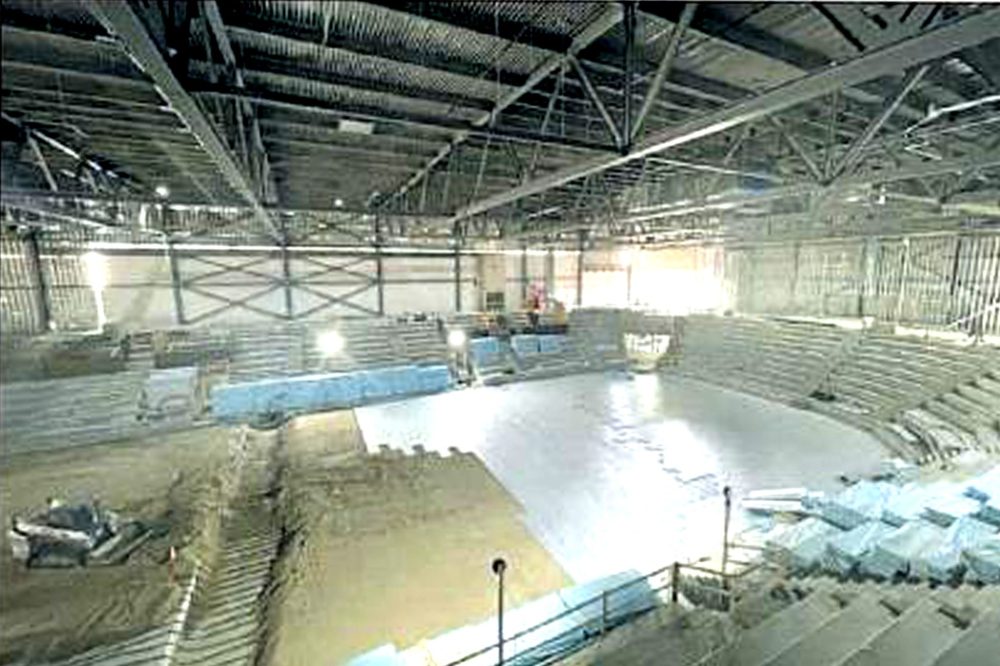
He had three full-time staff members and three summer hires. Siemens’ department also took over responsibility for maintenance of the town’s cemeteries, when Ben Sobering, who doubled as the town’s chief of police, retired.
Siemens reported to the Recreation Commission until that committee was disbanded and then reported to Town Administrator Jack Kehler. In a new role after the election of 2006, Councillor Siemens moved to the other side of the council table and Kehler now reported to him.
Pressed to cite a few memorable highlights of his 17-year career in parks and recreation, Siemens says the arrival of the town’s first Zamboni ranked right up there near the top.
It was during the Western Canadian Allan Cup playdowns in 1979, when the ice cleaning tractor failed in the middle of a game.
Siemens had to find a four-wheel drive vehicle to drag the tractor off the ice and the town had to fork over $3,000 to get the tractor up and running that night.
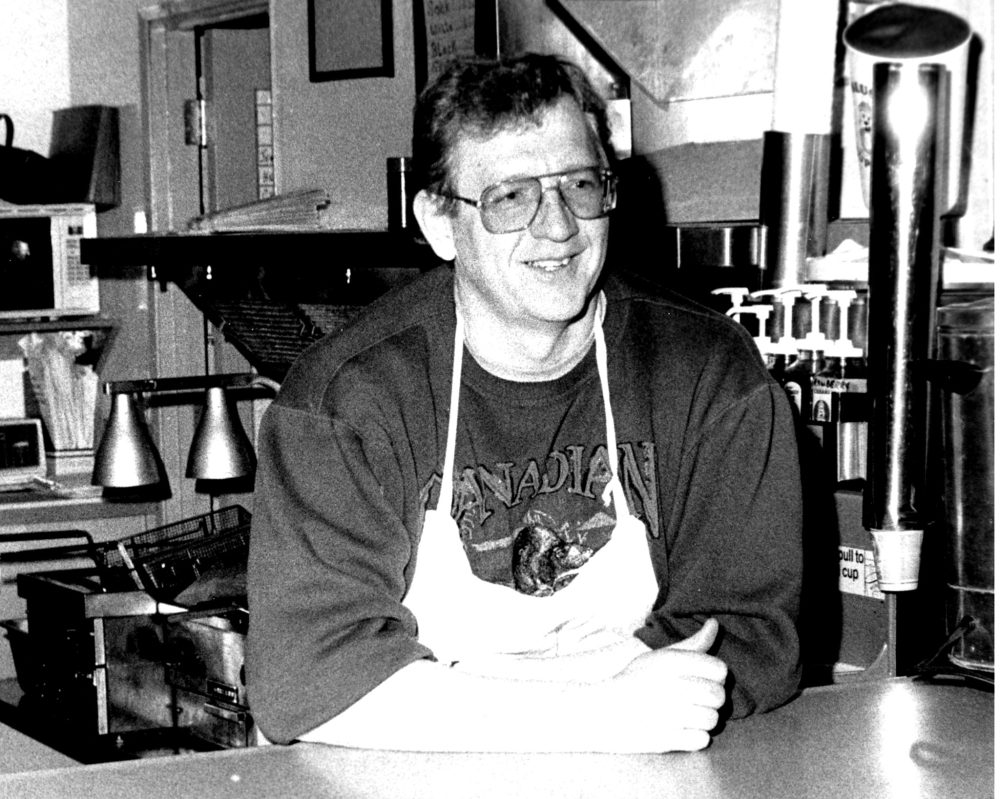
Many in the crowd thought the frantic antics of town staff trying to get the tractor off the ice and get the ice ready for the next period of hockey, using the old method of hand scrapers, was as entertaining as the hockey that night, Siemens said. It was shortly after that the town bought a Zamboni.
But as entertaining as that 1979 ice cleaning episode had been, antics of the Zamboni driver on another occasion, when Steinbach was hosting another important event, rated national television coverage and an epic run on YouTube.
Zamboni driver Ben Harder came out with his machine while a CTV camera man was on the ice filming a Rod Black interview at the players’ bench. Ben waved them out of the way, for he had a job to do and while Black fled, the camera man was not as quick backing out of the way and his camera got clipped and went crashing to the ice.
The CTV late news had footage from another camera and Ben was dubbed “Zorro the Zamboni Driver”.
On a more serious note, Siemens recalled the controversy surrounding the building of Steinbach’s second arena in 1995.
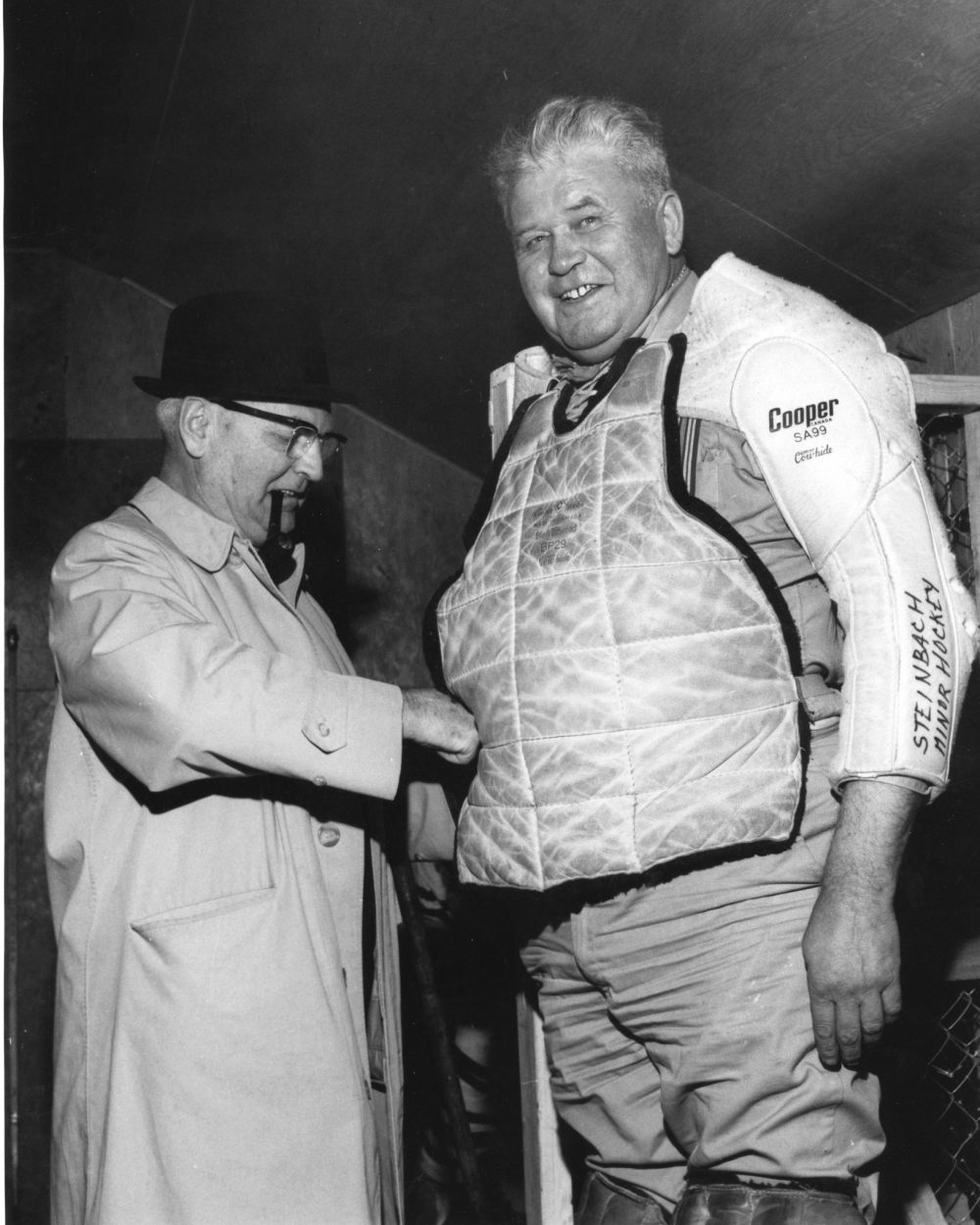
This was a project involving a community committee headed by Bob Smith, whose father, T.G. Smith, had been instrumental in bringing about the construction of the first arena.
The city agreed to build the second rink if the committee raised half the money it needed as a community contribution.
Siemens said the committee raised a lot of money, but then the city said the $250,000 grant they were to receive from Sport Manitoba was part of the city’s contribution and the committee was asked to raise more funds.
The public outcry that followed prompted the city to build the second arena anyway. Siemens said he was in an untenable position at the time, for he was liaison between the town and the arena committee.
And today, with a fantastic new Southeast Event Centre, the City of Steinbach is way ahead of schedule, considering initial arena construction ate up a couple of decades between discussion and construction.
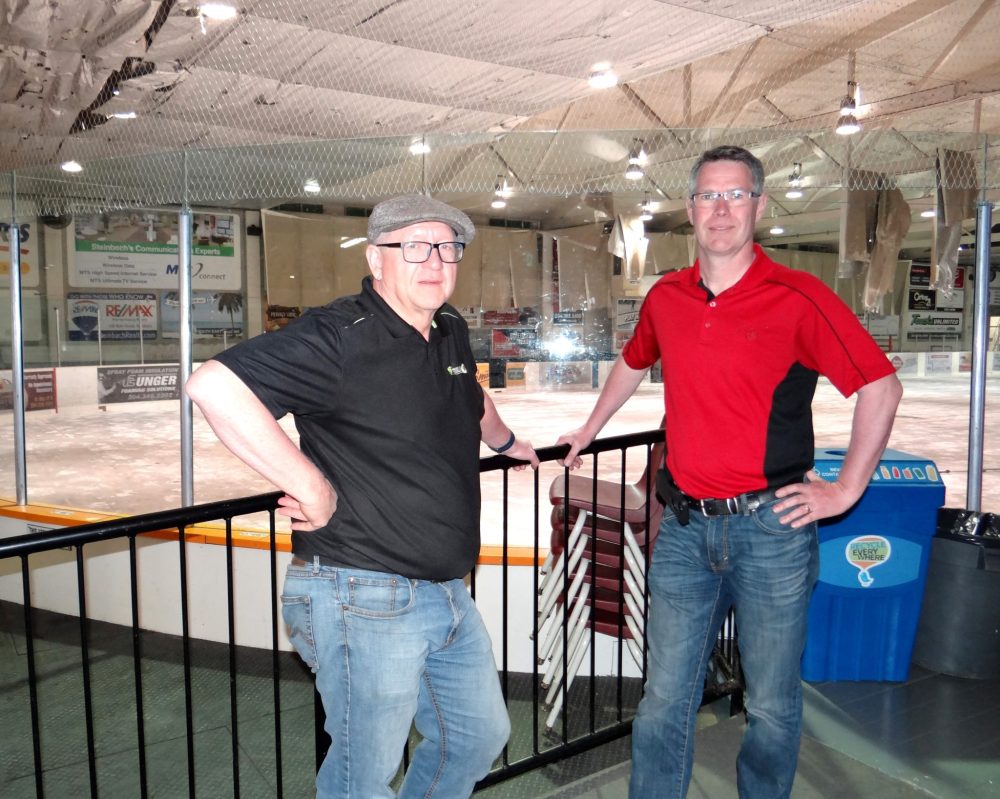
In 2019, a multi-million dollar arena proposal was at the concept stage only, but the idea was soon fast-tracked at the council table due to long-standing arena talks and the age of the Centennial Arena.
Plans for a multi-use Southeast Event Centre began in earnest, and by December of 2021, Steinbach council unanimously supported a borrowing by-law to help pay for a $42.5 million centre.
The new facility was to include a 2,400-seat arena, a large banquet hall, which would also be used for court sports, and a walking track.
The last week in November of 2023, shovels dug into a fresh pile of dirt placed on the frozen ground outside the Centennial Arena, kicking off construction of the Southeast Event Centre.
At the newly estimated cost of $66.2 million, Steinbach Mayor Earl Funk described the facility as the largest single project the community had ever undertaken.
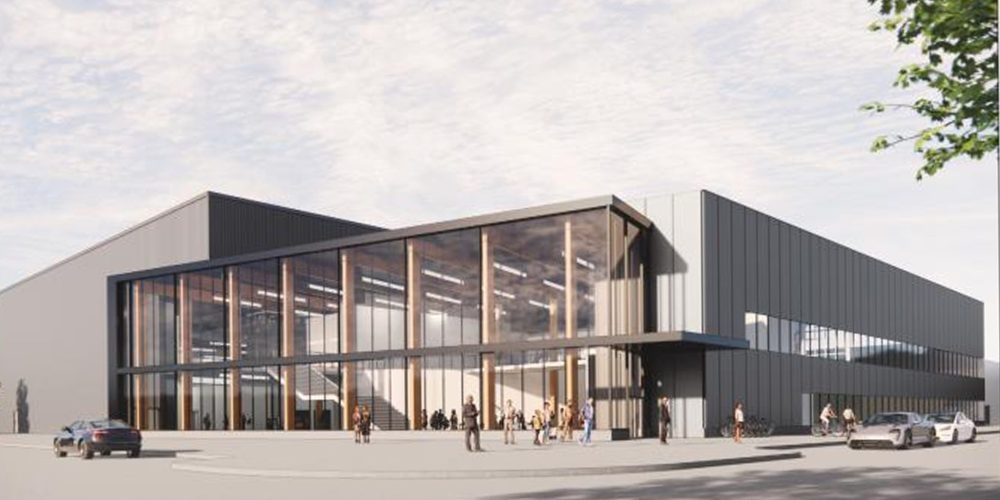
Originally pegged as a $42.5 million project, tenders came in much higher with the lowest at $75.33 million, but cost savings were found to lower that figure considerably.
But the dollar amounts weren’t on the minds of those at the sodturning celebrating what they called an historic day in Steinbach.
